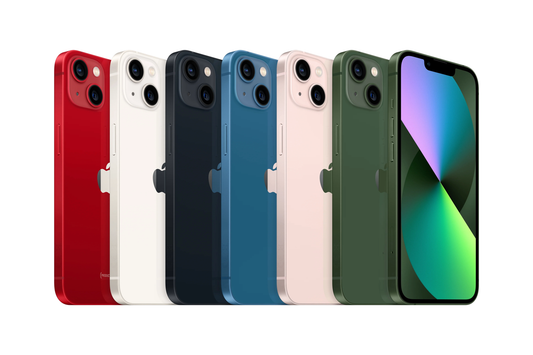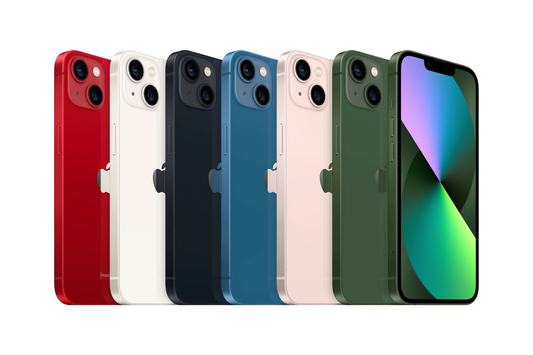Every September, Apple releases a new iOS version alongside its latest iPhones, ushering in fresh features and performance boosts. For users, these updates aren’t just about convenience—they’re a key measure of how long an iPhone will remain secure and compatible.
Once your iPhone stops receiving major iOS updates, it begins to fall behind on app features and security. But that doesn’t mean it immediately becomes obsolete. Most models continue to get minor patches and app support for at least another year or two after their final iOS version.
So if you’re still holding onto an iPhone XS, you may be wondering: Is it still supported in 2025? How long will Apple keep it updated—and is it finally time to upgrade? Let’s break it down.
How long will my iPhone XS be supported?
Apple officially ended major iOS support for the iPhone XS and XS Max in September 2025, when iOS 26 launched. The XS’s final major software version is iOS 18 (released in 2024), marking the end of its seven-year update streak.
That doesn’t mean your phone will suddenly stop working. Apple typically provides security updates for one to two years after dropping a model from its main iOS lineup. In practice, this means your iPhone XS should remain safe and functional through at least late 2026.
Apps will also continue to run smoothly for a while. Most developers support the current and previous iOS versions, so you can expect strong app compatibility for another year or so. After that, newer versions of apps like Gmail, Uber, and Netflix may start requiring iOS 26 or newer.
 How long does Apple support iPhones in general?
How long does Apple support iPhones in general?
Apple’s iOS support window has become pretty consistent over the past decade. Most iPhones receive an average of around seven major iOS versions before being retired.
Hardware plays a major role in that timeline. The iPhone XS uses Apple’s A12 Bionic chip, first introduced in 2018. Historically, Apple drops support for one processor generation each year. For instance, the A10-powered iPhone 7 series lost support with iOS 16 in 2022 and the A11-powered iPhone 8 series lost support one year later.
Why does Apple stop supporting older iPhones?
Each new iOS version brings more complex features, advanced AI integration, and higher processing demands. As a result, older chips struggle to keep up with the performance and efficiency requirements of newer software.
There’s also a practical side. Testing, optimizing, and maintaining older devices takes significant resources. Apple generally limits support to models that can reliably handle new features and security standards. That’s why one generation of iPhones typically loses support each fall.
Of course there are exceptions to the rule. Last years update, iOS 18, supported every device that ran iOS 17, including the XS. But in 2025, Apple resumed its normal rhythm with iOS 26, and the XS line was finally retired from major updates.
We wrote a detailed article about iOS compatibility here, in case you would like to learn more.
What happens when your iPhone is no longer supported?
Apple classifies older devices as "vintage" if they were discontinued more than five but less than seven years ago, and "obsolete" if discontinued more than seven years ago. If your iPhone falls into one of these categories (i.e., you’re using the iPhone X or earlier), you’re already at least three major iOS versions behind.
The iPhone XS now falls squarely into the vintage category. That means it’s still functional, but over time it will lose access to new app versions and minor security fixes. For example, many popular apps already require iOS 18 or newer, and by 2026, the baseline will likely move to iOS 26.
If you rely on your phone for sensitive data, mobile banking, or work tools, the gradual loss of updates could make the XS less reliable for long-term use.
The “Goldilocks zone”: Not too old, not too new
Right now, the iPhone XS sits in what we like to call the “Goldilocks zone.” It’s one major iOS version behind—old enough to be affordable, but still modern enough for basically all daily tasks.
Phones in this zone don’t get the latest bells and whistles, but they remain secure and app-compatible. For many users, this is the perfect balance between value and functionality. If you’re not chasing cutting-edge AI features or camera upgrades, your XS can comfortably carry you through 2026.
Should you upgrade from the iPhone XS in 2025?
If your iPhone XS is still running well and meets your everyday needs, there’s no rush to replace it. You’ll be fine for another year.
However, if you want a device that will stay supported for several more iOS versions, consider upgrading to an iPhone 12, iPhone SE (3rd gen), or newer. These models will continue receiving updates for a couple of years and offer noticeable boosts in battery life, camera performance, and software features.
When you’re ready to upgrade, check out Orchard’s selection of iOS 26-compatible iPhones—they’re ideal for users looking for longevity without the premium price tag.
Recycling or trading in your old iPhone XS
Don’t toss your XS in a drawer or the trash. Even if it’s past its prime, it still has value. Many platforms—like Orchard, Craigslist, or Kijiji—make it easy to sell or trade in your old device. Orchard offers higher payouts than most other places, it's a simple 3-step process and you receive your payment in cash (instead of store credit like Apple or carriers).
If it’s too broken to resell, consider recycling it responsibly. Orchard also offers eco-friendly recycling programs that keep electronics out of landfills and, in some cases, even pay you for your old device.
When will Apple stop supporting each iPhone?
As we mentioned above, there’s no crystal ball that can tell us for sure when each iPhone will stop being supported. But here’s our informed estimate for each phone’s likely last iOS version
|
iPhone Model |
Last Supported iOS Update |
|
iPhone XS |
iOS 18 (2024) |
|
iPhone XS Max |
iOS 18 (2024) |
|
iPhone XR |
iOS 18 (2024) |
|
iPhone 11 |
iOS 26 (2025) |
|
iPhone 11 Pro |
iOS 26(2025) |
|
iPhone 11 Pro Max |
iOS 26 (2025) |
|
iPhone SE (2020) |
iOS 26 (2025) |
|
iPhone 12 mini |
iOS 27 (2026) |
|
iPhone 12 |
iOS 27 (2026) |
|
iPhone 12 Pro |
iOS 27 (2026) |
|
iPhone 12 Pro Max |
iOS 27 (2026) |
|
iPhone 13 Mini |
iOS 28 (2027) |
|
iPhone 13 |
iOS 28 (2027) |
|
iPhone 13 Pro |
iOS 28 (2027) |
|
iPhone 13 Pro Max |
iOS 28 (2027) |
|
iPhone SE 2022 |
iOS 28 (2027) |
|
iPhone 14 |
iOS 28 (2027) |
|
iPhone 14 Plus |
iOS 28 (2027) |
|
iPhone 14 Pro |
iOS 29 (2028) |
|
iPhone 14 Pro Max |
iOS 29 (2028) |
|
iPhone 15 |
iOS 29 (2028) |
|
iPhone 15 Plus |
iOS 29 (2028) |
|
iPhone 15 Pro |
iOS 30 (2029) |
|
iPhone 15 Pro Max |
iOS 30 (2029) |
|
iPhone 16 |
iOS 30 (2030) |
|
iPhone 16 Plus |
iOS 30 (2030) |
|
iPhone 16 Pro |
iOS 30 (2030) |
|
iPhone 16 Pro Max |
iOS 31 (2030) |
|
iPhone 16E |
iOS 31 (2030) |




